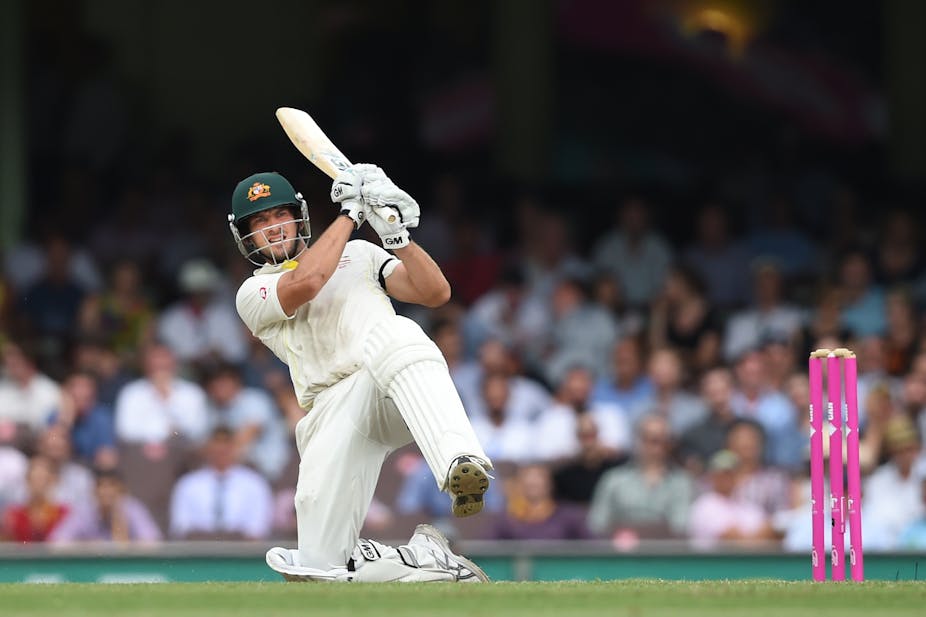Yesterday Cricket Australia launched onto the Apple TV network, becoming the first Australian sports organisation to join the platform. The new Cricket Australia channel will feature a mixture of interviews, skills tutorials and highlights, with some content being created by Nine Network (which currently airs Australia’s international matches), but no live content, yet.
This new development raises the question of sports broadcasting rights and how the traditional television model may be changing. Does traditional free-to-air TV sports broadcasting have a future in Australia?
Cricket Australia reported in 2012 that “media rights typically account for 60-80% of the total annual income for Cricket Australia”. More recently those rights have expanded beyond television and radio to digital rights. Both the Australian Football League (AFL) and Cricket Australia have commenced digital subscriptions, which allows access to video streaming of games.
Media regulation
The concept of sport broadcasts becoming subscription-based is not new.
In 1992, paid-subscription media attempted to take hold of Australian sports. But this was prevented by the government’s introduction of anti-siphoning laws to regulate the media companies’ access to significant sporting events.
The provisions of the Broadcasting Services Act (1992) governing sports broadcasts have been the subject of long-running debate between free-to-air, pay television providers and the Australian public.
In 2002 Optus argued that “anti-siphoning in terms of sporting properties are a major impediment of (subscriber) uptake”. Fox Sports too argued that the “existing scheme favoured free-to-air broadcasters”.
In 2009 Free TV Australia Limited launched Keep Sport Free, a public petition campaigning for sport to stay free on Australian television.
Do things change, however, when a sporting code itself is effectively taking the role of broadcaster, as appears to be the case in Cricket Australia’s collaboration with Apple TV?
Big money is involved in sports broadcasting
Foxtel has recently held part of the broadcast rights for both AFL and cricket – although the Broadcasting Act requires them to collaborate with free-to-air broadcasters.
The current five-year broadcast rights for AFL are valued at A$1.25 billion and for Cricket Australia at A$590 million. (Compare this to the latest NBA US$24 billion broadcast deal for nine years, to begin in 2017.)
These figures give an indication of how lucrative sporting rights are globally.
The formal negations will commence in the coming weeks for the AFL broadcasting rights from 2017, with bidding expected to start at A$1.5 billion.
While all free-to-air television networks have expressed interest in the new rights, the real battle to watch is over digital rights. It is rumoured that the Apple TV network, Google and YouTube could also become part of the new AFL digital rights discussions.
In addition to new players for the digital rights, The Age reports that the AFL could potentially “produce a game of its own per week via its website and available on hand-held devices”.
Cricket Australia is taking a different approach. It has overhauled its digital presence for the 2014-15 season to allow the fans to “get closer to the action this summer”.
The update includes further strengthening its partnership with Nine Entertainment. During the television broadcasts of the cricket there are many discussions between commentators promoting the video streaming service; something not seen within AFL broadcasts. The new Cricket Australia content on the Apple TV network promises to further enhance this stream.
Digital streaming by AFL and Cricket Australia
The AFL’s digital streaming service Live Pass is the result of a deal with Telstra, which paid A$153 million in 2011 for the digital rights. The service has packages for those living in Australia and abroad.
By contrast, Cricket Australia’s Live Pass is available on mobile and tablet devices, along with streaming on computers. The subscription is only available in Australia, for games played in Australia (except the 2015 World Cup) and the Ashes tour of the British Isles 2015. This includes the Test series, one-day internationals, T20 (International and Big Bash) and Southern Stars (Australian women’s team) matches.
Dedicated streaming for fans
The AFL and Cricket Australia “live” streaming services are in competition with free-to-air television broadcasters, but also other subscription services such as Foxtel’s Go service. But at A$50 per month for a Foxtel sports subscription, the cost is considerably higher than the combined subscription price of the AFL and Cricket Australia.
In the US, the global cable and satellite television channel ESPN is planning to commence its first online video streaming service that which is not part of a pay-TV bundle. Late last year it was rumoured that the launch event for the service would be the 2015 Cricket World Cup, due to start next month, but is yet to come to fruition.
The US cricket fan base is estimated by ESPN to be 30 million, but ESPN doesn’t see the streaming service as a replacement for its current cable television services. The President of ESPN, John Skipper, says he suspects his audience will “trade up”.
ESPN’s model differs to that of both AFL and Cricket Australia as it still involves a subscription service provider, rather than the broadcast and subscription being direct from the sport’s corporation.
Speed of uptake
The impact from the AFL and Cricket Australia’s video streaming services could take some time and it’s early days for Cricket Australia’s partnership with Apple TV.
The first and most important barrier is the social uptake of the technology.
Currently 80% of Australian home have access to the internet, but the percentage of Australian homes with tablets is 42% and smartphones 71%. Australians are on average watching only 12 minutes of video content per month across these two platforms, along with PC and laptops.
If the AFL wants to become the prime broadcasters of its sport this could be done as a free (ad-driven) service with an alternative for subscription, ad-free.
Currently 27% of Australian homes have televisions with internet connectivity. As this number increases, sporting organisations will have greater direct access to their audience.
For now, sports television will remain but the future looks exciting, particularly for the audience.

